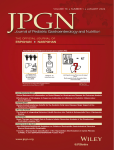In Vitro Digestion of Proteins in Human Milk Fortifiers and in Preterm Formula
ABSTRACT
Background:
Knowledge about the digestibility of the proteins in new products designed for feeding preterm infants is limited. The purpose of this study was to observe in vitro the hydrolysis of the bovine and human whey proteins in such products.
Methods:
Proteins in human milk, in human milk fortifiers (Presemp [Semper AB, Stockholm, Sweden] and Enfamil [Mead Johnson, Evansville, IN, U.S.A.] human milk fortifiers), in preterm formulas (Similac Special Care [Ross, Columbus, OH, U.S.A.] and Enfalac [Mead Johnson]), and whey protein concentrates with varying degrees of denaturation were digested by duodenal juice from healthy preterm infants, from a 3-year-old child, and from adults. Digestion was studied in vitro using polyacrylamide gradient gel electrophoresis, electroimmunoassay, and nonprotein nitrogen analysis.
Results:
Casein was the protein most rapidly degraded in all products. Human and bovine whey proteins were more slowly digested; as much as 68% of human lactoferrin was still immunoreactive after 40 minutes of digestion. The corresponding figure for bovine serum albumin was 24-69%; for B-lactoglobulin, 20-40%; for bovine α-lactalbumin, 20-51%; and for humanα-lactalbumin, 41%. Contrary to common belief, digestibility of bovine whey proteins decreased with a high degree of denaturation of the proteins.
Conclusions:
Bovine whey proteins in human milk fortifiers and in preterm formulas are relatively slowly digested in vitro by normal duodenal juice. The results may have implications for the design of products for feeding preterm infants.




